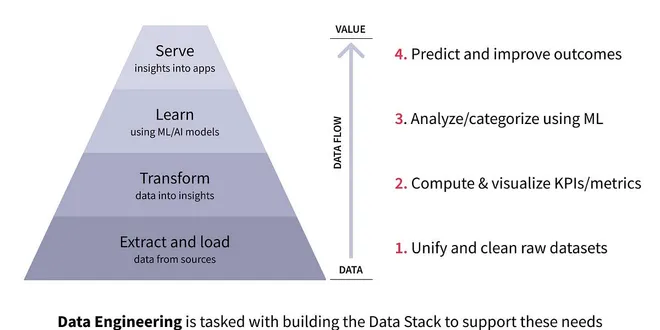Extract, Transform, Load
Extract, Transform, Load (ETL) is a crucial process in data engineering that facilitates the movement of data from various sources to a target system. The ETL process consists of three main steps:
- Extract: This step involves gathering data from diverse sources such as databases, files, or APIs.
- Transform: In this phase, the extracted data is cleaned, modified, and formatted to meet the requirements of the target system.
- Load: Finally, the transformed data is loaded into a destination, such as a data warehouse or database, for analysis and reporting.
ETL is essential for ensuring high-quality data for decision-making and analytics.

A Friendly Introduction to ETL (Extract, Transform, Load) Process in Data Engineering with Python
What is ETL (Extract, Transform, and Load) ETL stands for Extract, Transform, and Load. It’s a three-step process in data engineering that helps move data from its source to a target system. Let’s bre...
📚 Read more at Python in Plain English🔎 Find similar documents

5 Helpful Extract & Load Practices for High-Quality Raw Data
Immutable raw areas, no transformations, no flattening, and no dedups before finishing your excavations Excavator - photo by Dmitriy Zub on Unsplash. This post is an updated version of the original v...
📚 Read more at Towards Data Science🔎 Find similar documents

Build The World’s Simplest ETL (Extract, Transform, Load) Pipeline in Ruby With Kiba
You can always roll your own, but a number of packages exist to make writing ETL’s clean, modular and testable. ETL stands for “extract, transform, load”, but unless you come from a data mining…
📚 Read more at Towards Data Science🔎 Find similar documents

Extract Transform Load (ETL) for Books to Scrape
Web scraping is the process of extracting data from websites. All the job is carried out by a piece of code which is called a “scraper”. First, it sends a “GET” query to a specific website. Then, it…
📚 Read more at Analytics Vidhya🔎 Find similar documents

What is Data Extraction? A Python Guide to Real-World Datasets
Data extraction involves pulling data from different sources and converting it into a useful format for further processing or analysis. It is the first step of the Extract-Transform-Load pipeline…
📚 Read more at Towards Data Science🔎 Find similar documents

Data Warehouse Transformation Code Smells
There is a strange paradigm in Data Engineering when it comes to transformation code. While we increasingly hold extract and load (“EL”) programming to production software standards, transform code…
📚 Read more at Towards Data Science🔎 Find similar documents

A new contender for ETL in AWS?
ETL — or Extract, Transform, Load — is a common pattern for processing incoming data. It allows efficient use of resources by bunching the “transform” into a single bulk operation, often making it…
📚 Read more at Towards Data Science🔎 Find similar documents

ETL Using Luigi
In computing, extract, transform, load ( ETL) is the general procedure of copying data from one or more sources into a destination system which represents the data differently from the source (s) or…
📚 Read more at Analytics Vidhya🔎 Find similar documents

Building an ELT Pipeline in Python and Snowflake
ETL (Extract, Transform, Load) and ELT (Extract, Load, Transform) are two processes used for integrating and transforming data, but they have different approaches. Think of it like cooking a meal —…
📚 Read more at Towards Data Science🔎 Find similar documents

Transforms
Transforms Data does not always come in its final processed form that is required for training machine learning algorithms. We use transforms to perform some manipulation of the data and make it suita...
📚 Read more at PyTorch Tutorials🔎 Find similar documents

Extract & Load, Transform, Learn, and Serve — Getting Value from Data
Every company wants to deliver high-value data insights, but not every company is ready or able. Too often, they believe the marketing hype around point-and-click, no-code data connectors. Just set…
📚 Read more at Towards Data Science🔎 Find similar documents

What’s ETL?
ETL stands for Extract - Transform - Load, it involves moving data from one or more sources, making some changes, then loading it into single destination.
📚 Read more at Towards Data Science🔎 Find similar documents

